Photos from recent landscaping projects by Ecoyards in West Seattle
Posted on June 14th, 2011 by Andy
Filed under: Seattle Hardscaping,Seattle Landscape Design,Seattle Landscape Maintenance,Vegetable Gardening | Permalink | No Comments
Filed under: Seattle Hardscaping,Seattle Landscape Design,Seattle Landscape Maintenance,Vegetable Gardening | Permalink | No Comments
Ecoyards is now certified through Techniseal’s Certified Applicator Program. This program focuses on specialized cleaning, sealing and joint stabilization of paver patios. We feel this certification is important because Seattle’s wet weather can be tough on pavers. Common problems in our area include the following:
Techniseal is an industry leader in advanced care and maintenance products for pavers, retaining wall products, slabs and natural stones. Whether it is to protect and preserve the appearance of new pavers or to restore older surfaces and enhance their value, Techniseal has a full range of products for the treatment and protection of hardscapes. Some of the products that Ecoyards uses from Techniseal are described below.
Polymeric Sand –
Polymeric jointing sand is a mix of sand and binder, specially formulated for filling joints when installing pavers, slabs or natural stones. The sand is applied dry and is activated with a light watering. It starts to set a few minutes after wetting, and quickly becomes resistant to erosion due to water (rain, splashes, sprinklers, etc.). Once it’s completely cured, polymeric sand provides the following benefits:
• Inhibits weed growth.
• Deters ants and other insects.
• Eliminates joint erosion caused by rain, power washing, and wind.
• Turns flexible when wet, which allows the sand to follow slight movement of the pavers.
Cleaning Products –
Concrete pavers are low-maintenance and provide long-lasting beauty. However, like concrete slabs, pavers are not impervious to oil and other substances that can stain the pavers and become difficult to remove. Treatment for pavers is generally carried out in three steps:
Protectors –
Protectors are transparent resins that protect pavers and slabs made of concrete and natural stone. Protectors form a micro-porous layer that lets water vapors out but keeps out contaminates. Protectors come in a variety of options that enhance the appearance of pavers. Homeowners can choose from a “wet look” or a “natural look.” Various finishes include a glossy finish or a matte finish.
Call or email us today if you need help with cleaning and protecting your paver patio, driveway or walkway.
Filed under: Seattle Hardscaping,Seattle Landscape Maintenance | Permalink | No Comments
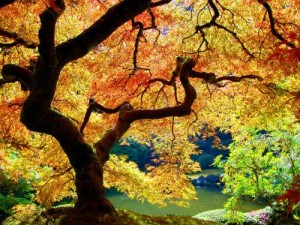 Japanese maples rank among my favorite plants. They provide spectacular fall color, are easy to grow, thrive in our temperate Northwest climate, and don’t need much maintenance, except for some selective pruning each year. We have five Japanese maples on our property. Two are upright bloodgood maples whose purple-red leaves turn a brilliant crimson during the fall. The centerpiece, however, is a mature Crimson Queen laceleaf maple planted in front of the house. It has a graceful, weeping shape, with delicate layers that let in light from bottom to top. I’m particularly fond of this specimen, because it was one of the first I purchased and planted when I moved into the house seven years ago.
Japanese maples rank among my favorite plants. They provide spectacular fall color, are easy to grow, thrive in our temperate Northwest climate, and don’t need much maintenance, except for some selective pruning each year. We have five Japanese maples on our property. Two are upright bloodgood maples whose purple-red leaves turn a brilliant crimson during the fall. The centerpiece, however, is a mature Crimson Queen laceleaf maple planted in front of the house. It has a graceful, weeping shape, with delicate layers that let in light from bottom to top. I’m particularly fond of this specimen, because it was one of the first I purchased and planted when I moved into the house seven years ago.
Because of their delicate appearance, Japanese maples may seem difficult to care for. In truth, they don’t need much — just well-drained moist soil and some protection from afternoon sun (though some varieties will tolerate full sun). These are hardy plants that do well in containers, if given water during the summer drought months. Most varieties grow well in the Northwest without much fertilizers. If you do fertilize, go easy on nitrogen fertilizers which stimulate growth and makes pruning more of a challenge.
 To some, pruning Japanese maples can seem an art form. But really, it doesn’t take much expertise – only a good pair of pruning shears and some patience. Some experts say to avoid pruning maples in the winter when cuts on the trees are more likely cause it to ooze sap. We follow the advice of Cass Turnbull, with Seattle-based PlantAmnesty, widely considered the pruning expert in the Northwest. (Her pruning guide, by the way, is one of the books all gardeners should have on hand). Turnbull says any time is a good time for selective pruning of Japanese maples, but these trees are most easily pruned in the winter and summer. In an excellent article published in Fine Gardening, she writes:
To some, pruning Japanese maples can seem an art form. But really, it doesn’t take much expertise – only a good pair of pruning shears and some patience. Some experts say to avoid pruning maples in the winter when cuts on the trees are more likely cause it to ooze sap. We follow the advice of Cass Turnbull, with Seattle-based PlantAmnesty, widely considered the pruning expert in the Northwest. (Her pruning guide, by the way, is one of the books all gardeners should have on hand). Turnbull says any time is a good time for selective pruning of Japanese maples, but these trees are most easily pruned in the winter and summer. In an excellent article published in Fine Gardening, she writes:
With the leaves out of the way in winter, it is easy to see the branch structure and, in turn, make the right cuts. In summer, however, you can judge the right amount of thinning needed to see the tree’s bones. Summer pruning also stimulates less plant growth than winter pruning, so you can get away with a little more and the tree will stay thinned out longer.
Turnbull’s advice for pruning maples involves a lot of math and fractions, but they’re good rules to keep in mind: don’t take off more than 1/5 of the maple’s crown; don’t prune any branch that is more than half the diameter of the parent stem; don’t remove more than 1/4 of leaves on a given branch, since the leaves provide the plant with nutrients.
As with most pruning jobs, start by removing dead branches, branches that have criss-crossed, branches that are too vertical or horizontal, or those that touch the ground or crowd into other plants or hardscape. You want to be able to see between overlapping branch layers. Turnbull says if you plan to remove the lowest branches of your tree, take out only a few each time otherwise you’ll end up stressing out the plant. If you take one limb out, don’t take the one either directly above it or directly opposite in the same year. You often see Japanese maples pruned into an umbrella or mushroom shape, or not pruned at all so that they resemble a tumbleweed. There’s nothing delicate or pretty in this. Don’t try to hack off the top of the tree, otherwise, you’ll get lots of tiny branches that look like a mess.
Filed under: Seattle Landscape Maintenance | Permalink | No Comments
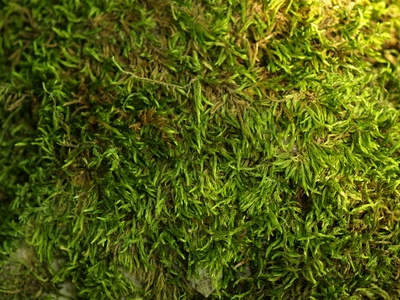 It rains a lot in the Northwest, so it’s inevitable that many of us deal with moss in our lawns and on our roofs.
It rains a lot in the Northwest, so it’s inevitable that many of us deal with moss in our lawns and on our roofs.
Mosses are opportunistic, thriving in just about any location where there is access to nutrients and moisture. Mosses spread in a number of ways, but they depend on moisture to reproduce, according to Oregon State University. Some mosses are extremely absorbent and are able to take up nutrients from water that flows over them (for example, under a shady tree where it’s wet and moist). Other mosses take up nutrients directly from soil (i.e. bare patch in your lawn) or substrate on which they are growing (i.e. cedar shake or composite roofs). So it’s no surprise that mosses take hold on our sidewalks, rooftops, driveways, trees, and in our gardens.
Moss in lawns
Many people view moss in lawns as a problem. With the exception of rooftops, mosses don’t necessarily cause damage. Moss doesn’t kill your grass. Moss in your lawn is usually symptom of a stressed lawn. Most likely, you’ve got poor drainage, excessive shade, poor fertility or compacted soil. Moss grows because these conditions aren’t idea for turf. Unless you address these underlying problems, moss is likely to return. Consider improving soil conditions, or planting something other than grass in that area. Some good substitutes for grass in areas where mosses thrive include blue-star creeper, beach strawberry (a Northwest native) and sweet woodruff.
If you’re determined to get the moss out, there are both physical and chemical controls. Moss can be killed with a number of products containing ferrous sulfate, ferrous ammonium sulfate, including Moss-Out and lawn fertilizers that contain some type of moss control. According to the Washington State University Extension, none of these materials pose serious threats to the environment; iron and sulfur are essential nutrients for grasses and tend to improve their color. Using chemical controls such as Moss-Out can be quick, easy and relatively cheap. But they won’t actually fix the problem in the long run. Why? You can kill the moss, leaving bare dirt. Since the conditions weren’t great for grass in the first place, moss will continue to grow and invade that particular area of your lawn.
To fix the underlying problems that promote moss growth: improve soil conditions by aerating or amending the soil with compost; trim tree limbs or shrubs that shade out portions of your lawn; plant shade-tolerant grass seed or ground covers; improve grass growth by mowing at the right height and cutting off no more than one-third of the blade at a time. For areas where drainage is a problem, you may also consider installing a French drain or trench to prevent water from pooling up in certain areas of your property.
Moss on rooftops
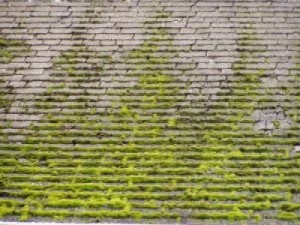 Moss on rooftops can damage shingles, cause water leaks and other problems. Cedar shake and composition roofs are more vulnerable to moss problems than metal roofs (remember how moss takes up moisture and nutrients?) Again, there are chemicals you can use to get moss off of rooftops. The Washington Toxics Coalition has this handy fact sheet with suggestions on how to prevent moss on your roof:
Moss on rooftops can damage shingles, cause water leaks and other problems. Cedar shake and composition roofs are more vulnerable to moss problems than metal roofs (remember how moss takes up moisture and nutrients?) Again, there are chemicals you can use to get moss off of rooftops. The Washington Toxics Coalition has this handy fact sheet with suggestions on how to prevent moss on your roof:
If you do use chemical controls, the Toxics Coalition recommends soap-based products over acid-based ones. It lists some of the least-toxic moss-killing products: Safer Moss & Algae Killer and Surface Cleaner II; Bayer Advanced 2-in-1 Moss & Algae Killer; Worry Free Moss & Algae Control; St. Gabriel Laboratories Moss Killer. The group recommends that you avoid products containing zinc sulfates or copper sulfates because these chemicals are not biodegradable. Also, the group says, be sure that rinse water does not run off the roof or street and directly into a body of water.
Filed under: Seattle Landscape Maintenance,Seattle Lawn Care | Permalink | No Comments
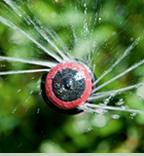 When I was growing up, one of the chores my dad assigned us four kids was to keep the front and back lawn evenly watered and emerald green. My dad never installed an automatic sprinkler system, let alone put a timer on it. Why would he need to? He had four perfectly capable children whom he could assign to hand-water the lawn. I remember countless mornings when my siblings and I would take turns going out to water the lawn before the hottest hours of the day descended. We would methodically move the spray nozzle from section to section, making sure to moisten but not over-saturate the grass.
When I was growing up, one of the chores my dad assigned us four kids was to keep the front and back lawn evenly watered and emerald green. My dad never installed an automatic sprinkler system, let alone put a timer on it. Why would he need to? He had four perfectly capable children whom he could assign to hand-water the lawn. I remember countless mornings when my siblings and I would take turns going out to water the lawn before the hottest hours of the day descended. We would methodically move the spray nozzle from section to section, making sure to moisten but not over-saturate the grass.
Thank goodness for advances in technology. My dad was trying to be efficient with his water use — i.e., watering in the morning so as not to lose too much to evaporation; avoiding excessive run-off by not watering too much — but smart irrigation technology has made the whole process so much easier. Much like smart technology that has allowed us to set and control the thermostats in our homes, smart irrigation technology allows us to set how often and how much we water our lawns or landscape beds.
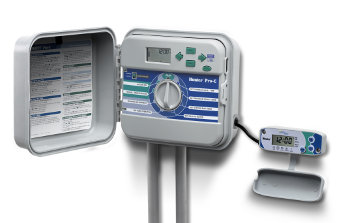 Traditional timers allow you to set a sprinkler system to turn on and off when you want. Smart irrigation technology senses weather changes and adjusts the irrigation accordingly. If it rains, it stops watering. (How many times have you seen sprinkler systems running when it’s raining out? This would certainly put an end to that.) If it’s hotter or the soil is drier than usual, the controller will increase watering. The controllers do all the work, and they are a much more efficient and sophisticated way to reduce outdoor water use. Studies show that weather-based irrigation technology help reduce outdoor water use anywhere from 15 to 30 percent, depending on the type of controller and where it was used. One study involving Denver, Colo. and two locations in California found that average individual homes save between 7 and 25 percent in water. If you’re interested in reading more, the U.S. Bureau of Interior did a literature review of studies involving smart controllers.
Traditional timers allow you to set a sprinkler system to turn on and off when you want. Smart irrigation technology senses weather changes and adjusts the irrigation accordingly. If it rains, it stops watering. (How many times have you seen sprinkler systems running when it’s raining out? This would certainly put an end to that.) If it’s hotter or the soil is drier than usual, the controller will increase watering. The controllers do all the work, and they are a much more efficient and sophisticated way to reduce outdoor water use. Studies show that weather-based irrigation technology help reduce outdoor water use anywhere from 15 to 30 percent, depending on the type of controller and where it was used. One study involving Denver, Colo. and two locations in California found that average individual homes save between 7 and 25 percent in water. If you’re interested in reading more, the U.S. Bureau of Interior did a literature review of studies involving smart controllers.
Many cities such as Seattle offer rebates for households that install smart irrigation controllers. In Seattle, the rebates range from $50 to $500, depending on what you install and whether it is on a new or existing sprinkler system. A smart controller on a new sprinkler system can net you rebates of between $225 and $375. You have to submit your rebate application within 90 days of installation. Click here to read about an irrigation project we completed in North Seattle using the latest in smart irrigation technology, which qualified the homeowner for a $480 rebate from Seattle Public Utilities.
Rotating spray-head sprinkler nozzles are also a new innovation in irrigation technology (shown above in top photo). They apply water more slowly and evenly than conventional sprinkler nozzles. The nozzles shoot multi-trajectory, rotating streams that apply water more uniformly. The water that shoots out of these rotating nozzles is less likely to mists and more resistant to wind. Applying water slowly allows soil to absorb it without running off into the sidewalks and streets.
Check out this city of Seattle brochure for more information about how to water wisely while keeping your landscape healthy and beautiful.
Contact Ecoyards if you’d like to have a smart irrigation system installed on your property.
Filed under: Seattle Irrigation Services,Seattle Landscape Maintenance,Seattle Lawn Care | Permalink | No Comments
You’ve heard us talk a lot about the benefits of Seattle rain gardens. In the coming months, you’ll hear a lot more about rain gardens in West Seattle, as King County embarks on a bold project to control stormwater overflows by using so-called green infrastructure such as rain gardens, plantings, trees and other vegetative areas.
 In December 2010, the county recommended a stormwater control project for the Barton basin that calls for rain gardens between sidewalks and curbs in a 66-block area in the Sunrise Heights and Westwood neighborhoods in West Seattle. Rain gardens use the natural properties of vegetation and soil to help soak up excess stormwater runoff that would otherwise end up in Puget Sound.
In December 2010, the county recommended a stormwater control project for the Barton basin that calls for rain gardens between sidewalks and curbs in a 66-block area in the Sunrise Heights and Westwood neighborhoods in West Seattle. Rain gardens use the natural properties of vegetation and soil to help soak up excess stormwater runoff that would otherwise end up in Puget Sound.
The Green Stormwater Infrastructure project is the first such “green” project for the King County Wastewater Treatment Division, which is responsible for wastewater treatment for Seattle and 16 other cities. The goal of the project is to reduce overflows from the Barton Pump Station near Seattle’s Lincoln Park. During times of heavy rains, pipes that carry both stormwater and wastewater get overwhelmed. Instead of sending water to the wastewater treatment plant, untreated water flows directly into Puget Sound near Lincoln Park. The county says this happens about four times a year.
In public meetings, many West Seattle residents told the county planners that they wanted a green solution to the problem of combined sewer overflows. The county is beginning its environmental project review in coming months, and says construction is expected to begin no later than December 2013 and take two years.
Filed under: Seattle Landscape Maintenance,Seattle Rain Gardens | Permalink | No Comments
Ecoyards is now a proud member of the National Association of Landscape Professionals. The National Association of Landscape Professionals cultivates and safeguards opportunities for the dedicated professionals and companies that create and enhance the world’s landscapes. The National Association of Landscape Professional’s mission is to be the respected leader and voice of the green industry.
Learn more about planet at the following site:
https://www.landscapeprofessionals.org/
Filed under: Seattle Landscape Design,Seattle Landscape Maintenance,Seattle Lawn Care | Permalink | 1 Comment
Ecoyards Earns Coveted Angie’s List Super Service Award
Award reflects company’s consistently high level of customer service
Ecoyards has been awarded the prestigious 2010 Angie’s List Super Service Award, an honor bestowed annually on approximately 5 percent of all the companies rated on the nation’s leading provider of consumer reviews on local service companies.
“Our Super Service Award winners are the cream of the crop when it comes to providing consistently high quality customer service, as judged by the customers who hired them,” said Angie Hicks, founder of Angie’s List.
Ecoyards is thrilled to have one this 2010 award in three different categories – Landscaping; Lawn and Yard Work; Hardscaping and Pavers. Thanks to all our great customers for posting positive reviews on Ecoyards.
Angie’s List Super Service Award winners have met strict eligibility requirements including earning a minimum number of reports, an exemplary rating from their customers and abiding by Angie’s List operational guidelines.
Service company ratings are updated daily on Angie’s List, but members can find the 2010 Super Service Award logo next to company names in search results on AngiesList.com.
Angie’s List collects consumer reviews on local contractors and doctors in more than 500 service categories. Currently, more than 1 million consumers across the U.S. rely on Angie’s List to help them make the best hiring decisions. Members get unlimited access to local ratings via Internet or phone, exclusive discounts, the Angie’s List magazine and help from the Angie’s List complaint resolution service. Take a quick tour of Angie’s List and view the latest Angie’s List news.
Filed under: Seattle Hardscaping,Seattle Landscape Design,Seattle Landscape Maintenance,Seattle Lawn Care | Permalink | No Comments
Recirculating fountains are a great way to add a self-contained water feature to your backyard. You get the benefit of a cascading waterfall – and the relaxing sounds – without the hassle of hooking the fountain up to a dedicated water source such as a garden hose or other outdoor plumbing.
Recirculating fountains rely on an electric pump that sends water from a small reservoir pan at the base throughout the entire system. The pump continues to recycle the water as long as it is turned on. The fountains are constantly recirculating water so they don’t waste much water. Occasionally you’ll need to replenish the water that’s loss due to evaporation, but otherwise these recirculating fountains are typically low-maintenance. And because it does not need to be hooked up to pipes or a garden hose, recirculating fountains are a very flexible landscape option.
There are many different choices of recirculating fountains. They can be as elaborate or as simple as you want. You can construct a fountains out of stone, rock, concrete, ceramic or even wood. They can be a tiered system of boulders, or a single basalt column with water cascading from a single hole at the top. Bubblers are nice in that they require even less space than a pondless waterfall, yet they still provide movement, sound, and interest to your landscape. Contact Ecoyards and we can help you decide the right fountain for your landscape.
Filed under: Seattle Landscape Design,Seattle Water Features | Permalink | No Comments
By now, most of us probably have a rain barrel or two that we use to catch rainwater from our roof. These red 50-gallon barrels have become common features around Seattle, Burien, Normandy Park and other cities, especially because you can get them at a nice reasonable price and they’re easy to set up. We currently have three of them at our house, and we’re able to use the water that we catch to irrigate our trees, container plants and lots more. But as many of you know, the barrels fill up quickly during a rain event. So what to do if you want to harvest more rainwater?
Enter the cistern. These larger containers can store hundreds or even thousands of gallons of water at a time, which conserve water and improve drainage issues at your property. Think: no more soggy lawn always getting flooded with inches of water when it rains! Because cisterns hold water during a rain, storm or snow event, less water rushes into our streets, drains and sewer systems. That means fewer sewer overflow problems and fewer pollutants washing unfiltered into our creeks, rivers and Puget Sound.
Cisterns aren’t much different from rain barrels. They’re just much larger. Home cisterns can capture anywhere from 200 to 1,000 gallons of water. They can look attractive, too, and blend in with your landscape. Unlike rain barrels, cisterns require a bit more planning and installation. Because they’re considerably larger than rain barrels — and will be heavier because of all the water they’ll hold — you’ll need a good foundation for it. Ecoyards is a licensed contractor registered with the city of Seattle RainWise program. We’re also licensed by the state, of course, but this program registration allows us to install cisterns, or rain gardens, at certain homes that are eligible for city rebates under the RainWise program. (Read more about the rebate program for rain gardens in our previous post).
Whether or not you’re eligible for a rebate, we’re happy to help you sort out all the details. If you’re interested in installing a cistern but don’t want to tackle it yourself, we can help you calculate how much rainwater can be harvested off your roof and then recommend a good size, shape and foundation for it. We’ll figure it all out for you, from pipes and connectors to the right Northwest native plants for your site. Cisterns can be made of many materials, such as plastic, sheet metal, wood or even concrete. You can install them underground, partially underground or above ground. For those who are in the Ballard neighborhood, and eligible for a city rebate, we also can help you navigate the rules and requirements. Please email us and we’ll help you figure it out.
Filed under: Seattle Landscape Design,Seattle Rain Gardens | Permalink | No Comments